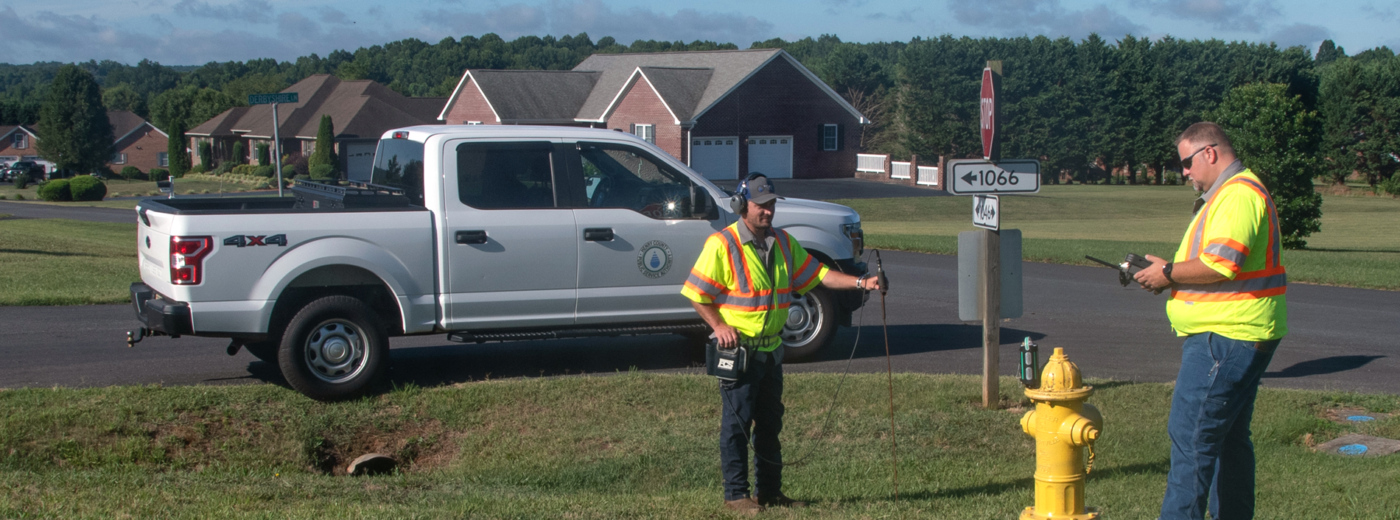Blogs
AWWA Features ASTERRA in Case Study About Subsurface Leak Detection
December 10, 2021


The American Water Works Association’s Journal AWWA recently featured a case study of the subsurface leak detection program in Henry County Public Service Authority (PSA) in Virginia. The article is Managing Non-Surfacing Leaks – The Key to Real Water Loss Reduction by Paul Gagliardo, MPH, PE.
Henry County PSA is a case study that serves as the model for any utility division with no formal subsurface leak detection program. It is the how-to for creating an asset evaluation and management plan where the actionable steps for preserving assets and building a sustainable program are clear and easy to follow. Henry County is determined to overcome challenges when it comes to water loss. Read on to learn how their collaboration with ASTERRA (formerly Utilis) earns their drinking water system high grades for efficiency and sustainability.
“Linear underground assets, transmission and distribution mains and service lines, are the backbone of a true engineering marvel of the 20th century and America’s drinking water system,” said Gagliardo in the article. “The infrastructure is ageing with many miles of pipeline being past its design life. The ASCE Infrastructure Report Card for 2021 gave the drinking water system a grade of C-. It reported an average leakage rate, or real water loss, at approximately 16% with 39 billion gallons of water delivered each day and a loss rate of 6 billion gallons per day.”
Drawing increasing attention to the unsustainable waste of potable water was a 2018 study, Water Main Break Rates in the USA and Canada, which reported a 27% increase in water main breaks between 2012 and 2018. In reported data, the number of breaks per 100 miles increased by about 27%, and only about 0.8% of the pipe mains are replaced each year.
Henry County PSA manages a service area of 372 miles of pipelines with approximately 12,000 connections. They began collection and analyzing water distribution data in 2017. Gagliardo reported they had been in a “steady state, … (with) no major changes in system operating pressures, plant losses, flushing volumes, tank losses or fire protection usage. Only 20 miles of new pipe mains have been constructed and added to the system length.”
Unfortunately, what Henry County PSA observed while performing data analysis was that their county’s real water loss was on the rise. From April 2017 to April 2019, it rose from 22% to 32.3%. This represents a volume of real water loss rising from 18.9 to 30.5 million gallons per month.
Henry County PSA had to dig deeper. At that time, they did not have a proactive leak detection program but were consistently responding to surfacing leaks. They were seeing between 12 and 15 main breaks per 100 miles of pipe, very consistent with the benchmark data of 11 to 14 breaks per 100 miles. These surfacing leaks were repaired immediately, but the real water loss continued to increase. It became obvious that managing non-surfacing leaks was the key to real water loss reduction, and traditional boots on the ground was not enough.
Satellite-directed leak detection strategies were proving to be the most economical, reliable, and efficient method to find and manage non-surfacing water leaks. In a study secured by the California Energy Commission reported here, twelve months of satellite-directed leak detection data created from a 100-mile system showed a startling 500 leaks, but only 29% could be inspected by boots on the ground due to lack of resources. It illustrated the challenge Henry County PSA already understood.
In early 2019, Henry County PSA contracted with Utilis (now known as ASTERRA) to provide leak detection services. Utilis was growing to be a partner to water utilities because they commercialized the process of locating subsurface potable water pipe leaks from space using synthetic aperture radar (SAR). Gagliano summarizes the function of ASTERRA’s Recover product as follows:
Microwave radar is emitted from a satellite and used to detect the signature of wet soil underground with a potable water indication. Water sources such as leaking pipes, lakes, or swimming pools, reflect electromagnetic waves both below and above ground level. Every material has inherent electric properties, a dielectric constant, creating an identifying marker that allows distinguishing between different backscatter properties using SAR. Therefore, drinking water-saturated soil has a specific signature in SAR data that can be isolated by Utilis to find potable water leaks. To identify the water related backscatter, all other signals (e.g., EM noise reflection) are filtered or removed from the scan. The result is a GIS-based map showing points of interest (POI) where there are likely potable water pipe leaks. This map of POI’s and associated Likely Leaking Locations (LLLs) is then used to direct the boots-on-the-ground (BOTG) field inspection teams to confirm and pinpoint the leak location.
Henry County PSA and ASTERRA started their program in the spring of 2019 and incorporated field inspection programs through December 2020 by Henry County PSA crews. ASTERRA identified 684 likely leak locations using the satellite imagery, but only 311 leaks – 45% – of these leaks were also found through field inspection.
Detailed information regarding the types of leaks found in each of numerous parts of the system are reported in the Journal AWWA article. Critical reporting includes the following: “135 non-surfacing, utility side leaks accounted for 462 gallons per minute (GPM), or 665,000 gallons per day (GPD) of real water loss. This is the volume of real water loss that would not have been identified by historical methods, … with no pro-active program (using satellite imagery and ASTERRA Recover). The actual loss rate is 24 million gallons per month, a virtual reduction of 18 million gallons per month or 600,000 gallons per day.”
Henry County PSA fully scribes to benchmarking leak detection methodologies and follows best practices for analysis to a high level of certainty and accuracy. Together with ASTERRA, Henry County PSA is detecting 55% more leaks, driving a sustainable program, and protecting natural resources.